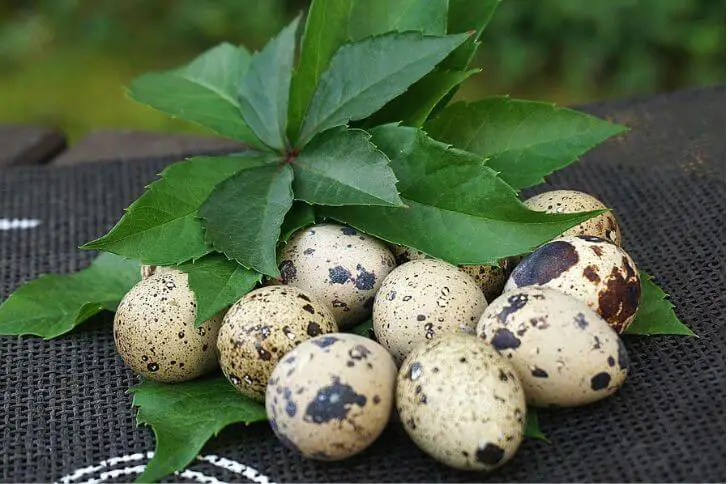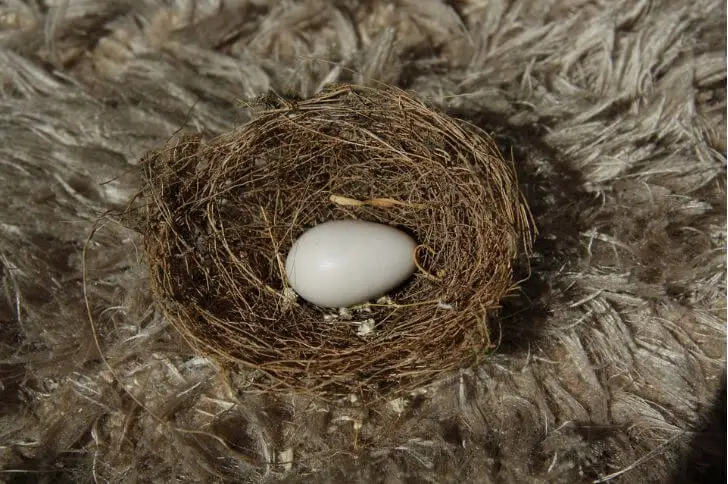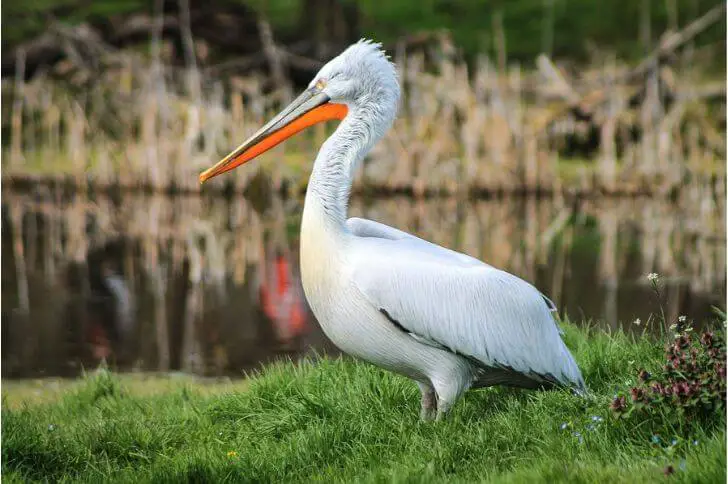Found in forested areas across Northeastern United States and Canada, pileated woodpeckers are members of hammering bird family; picidae. Adult male and females of this avian species have similar plumage with a few key coloring differences that help tell the sexes apart.
Adult males are black and white with a flaming red crest. Red markings on their cheeks help distinguish males from females. Female pileated woodpeckers are also black and white with the crest but no red marking on their cheeks.
But, what about the juvenile pileated woodpecker? Does it look like its parents? If not, how can you identify it? The guide below will help you identify juveniles by their plumage and also learn more about the initial stage of life of these Eastern North America birds.
What do juvenile pileated woodpeckers look like?
During spring to early summer, a breeding couple will lay three to five white eggs. They are tiny, about 1.2-1.4 inches. Parents share incubation responsibilities; males prefer sitting on the eggs at night while females take the day shift.
Pileated woodpecker babies are born naked and helpless. Their eyes are closed, making them clumsy.
At around day 3-5 you’ll notice some down feathers appearing on its skin. At around week two, the young birds develop pin feathers on their wings.
By the time the new brood is four weeks old, their bodies are already filled with black and white feathers. But at this point it is still difficult to differentiate juvenile female pileated woodpecker from the young males. You will also notice a dull-colored small crest.
How big are juvenile pileated woodpeckers?
This bird species is the largest in its family, so you can expect their juveniles to be equally big. At around week two, the juvenile pileated woodpecker is about 5-7 inches, the same size as a house finch. Their body mass varies from 0.6 to 0.95 oz. Juvenile female pileated woodpeckers are smaller compared to the males.
By week 4, the young pileated woodpeckers are noticeably larger; between 13 and 15 inches long. They have a span of 23 inches and a body mass of 6.3 to 9.8 oz. Juvenile pileated woodpeckers are larger than robin fledglings
What do Juvenile woodpeckers eat?
When birding, you may have noticed pileated woodpeckers prefer hanging around dead trees. The reason for this is ants are known to build their colonies in dead trees’ crevices.
Woodpeckers’ main diet are wood-boring beetle larvae and carpenter ants. Parents will extract them from large trees and regurgitate them to the young woodpeckers. This protein helps in accelerating their growth.
At one month, young pileated woodpeckers are still fed by their parents. And at this stage parents start to introduce other types of foods including fruits, berries and nuts.
Related Read: Learn about kiwi nesting habits
How long does the juvenile pileated woodpeckers molt last?
Molting is a term used to describe when young birds shed old feathers and grow new, longer feathers. Pileated woodpeckers baby molt lasts for at least two months.
At month two-three, you’ll notice slight changes in their plumage. The crest will be longer with a reddish-brown tinge, the short dark feather will be replaced by longer black feathers and the white stripes that run from its face to the sides will be more prominent.
At months 6-7, juvenile male pileated woodpecker will have a reddish tinge on their cheeks which will help you distinguish between the juvenile sexes.
What sound do juvenile pileated woodpeckers make?
Young pileated woodpeckers are quite loud and noisy. Babies are known to make buzzing sounds which can be heard from far. Their noise is similar to cicadas. Also, they are most noisy close to their meals time. Scientists hypothesize these buzzing sounds are meant to alert their parents or it’s due to excitement.
As they grow older, they’ll learn tattooing or drumming from their parents. All woodpecker species drum. This sound is produced by rhythmically striking a surface, especially dead trees. Pileated woodpeckers can drum at high speeds of 16-18 strikes per three seconds. Also, this is done to announce their territory.
How long do they stay with their parents?
How long do woodpecker babies stay with their mother? Young pileated woodpeckers are able to fly by day 26-28. They can live in the nest at this point but most young opt to stay with their parents until the age of 3 month.
It’s also worth noting, unlike other birds, pileated woodpeckers raise one brood per breeding season. So, even when the young birds can go out on their own, they stick around their home and parents continue to feed them. Parents still feed 2-3 month pileated woodpeckers by regurgitation.
Do juvenile pileated woodpeckers revisit their homes?
Most juveniles have been found to stay within the same area but will not revisit their parents once they’ve left the nest.
Also, these young woodpeckers remain part of the same flock as their parents and may leave once they have attained maturity and are ready to find their breeding territory.
How long does it take for a pileated woodpecker to mature?
The average age of reproductive maturity is 1 year. At this age, both male and female juvenile pileated woodpecker are ready to mate and raise a family.
Males pick a suitable tree and start making their nesting hole. This may last for about two-three week.
What do you do if you find a juvenile pileated woodpecker?
When you find woodpecker babies on the ground, you can identify them with the lack of feathers on their skin, find their nest and put them back. You can locate their nest by following the buzzing sound from other hatchlings.
Juvenile pileated woodpeckers are old enough to fly back to the nest. If you find them on the ground they may be learning the art of foraging for food from their parents.
What time of the year can you see young woodpeckers?
Pileated woodpeckers lay eggs between April and July. From the end of July up to October you can see the hatchings if you have trail cameras set up.
Where do immature woodpeckers sleep?
Immature birds spend most of their time in the nest. Once they fledge, they construct their nests. When they reach breeding age, males look for a new nesting spot, build a nest and attract a female.
Where can I see Young Pileated Woodpeckers?
Want to plan your next birding trip? These North American birds can be found year round in Eastern United States. If you live in a state within that region, you can attract them to your yard using a suet feeder. Lastly, their scientific name is dryocopus pileatus.
Sources:
https://en.wikipedia.org/wiki/Pileated_woodpecker
https://www.audubon.org/field-guide/bird/pileated-woodpecker
Hi fellow bird watcher. Welcome to our small corner of the world. At the spanishbirdguides.com our mission is to share with other bird watchers the things we love about birds, where to go bird watching within the United States, and more. I’d also love to hear from you. Feel free to contact me about your bird watching escapades, share videos, photos and more.



